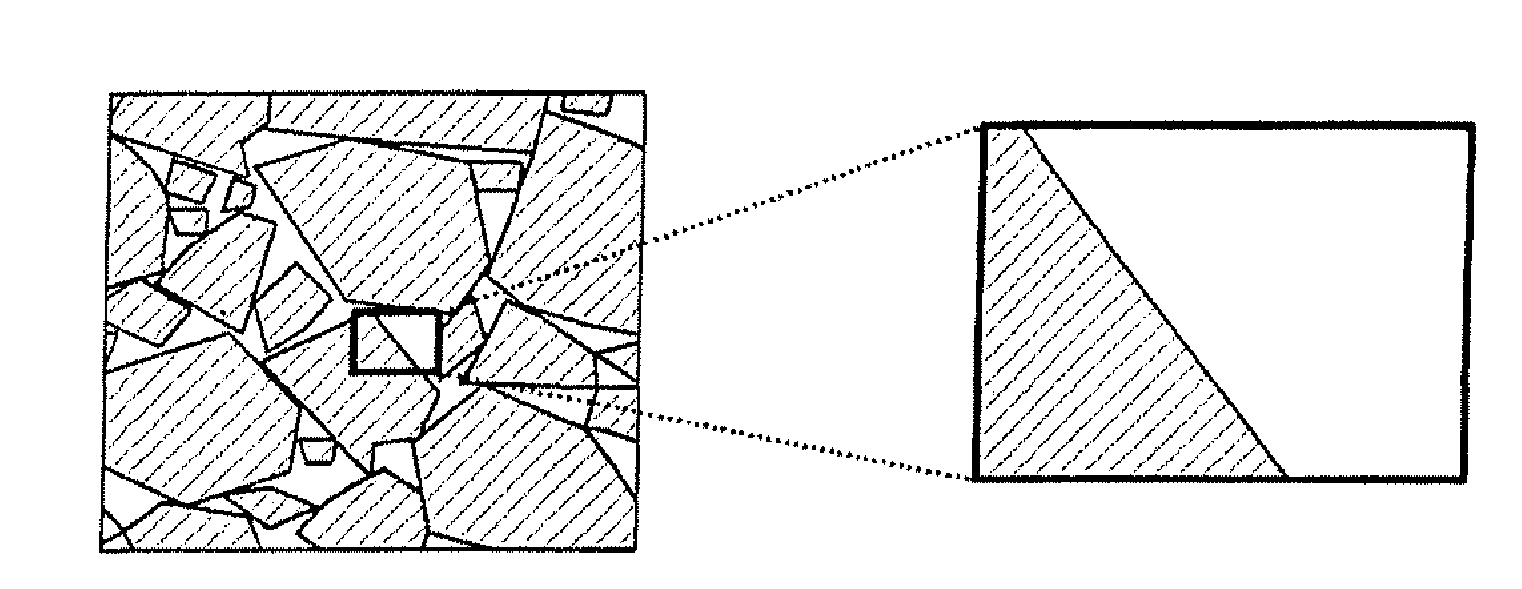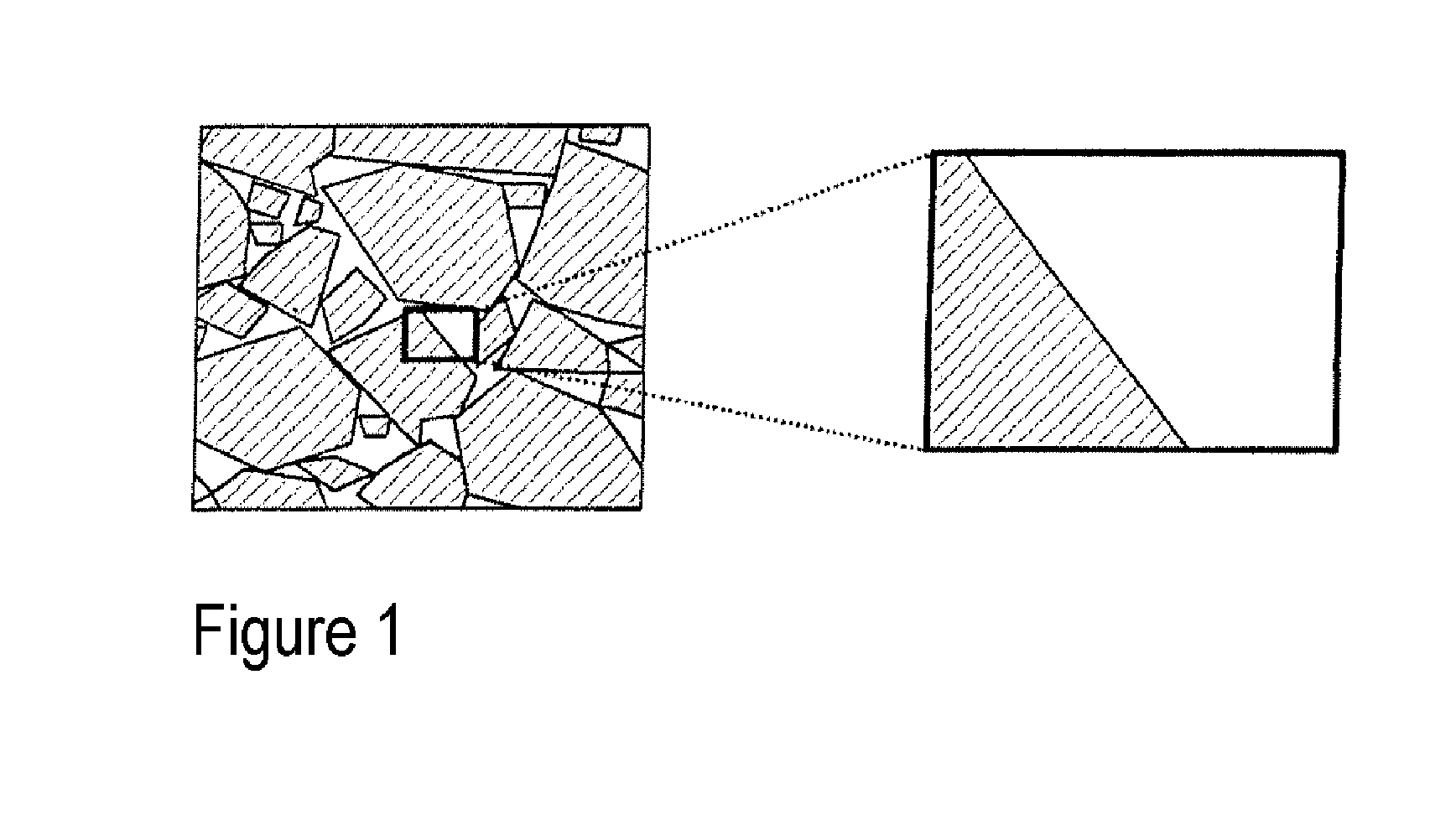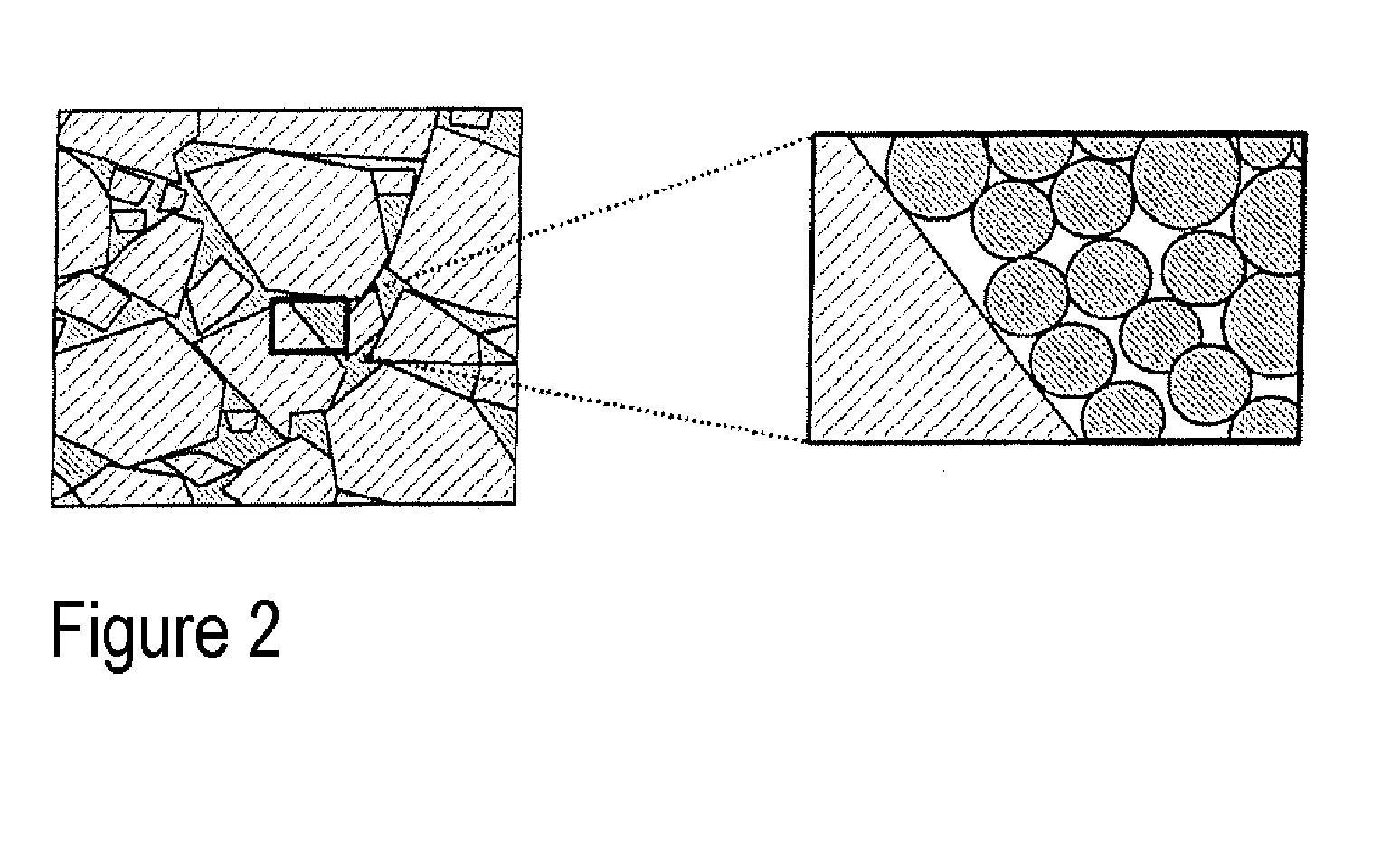Soft-magnetic material and process for producing articles composed of this soft-magnetic material
- Summary
- Abstract
- Description
- Claims
- Application Information
AI Technical Summary
Benefits of technology
Problems solved by technology
Method used
Image
Examples
example 1
[0072]The magnetic component is firstly selected. For this example, sintered cores which meet the typical quality requirements for performance ferrites are used as starting materials. The initial permeability μi is in the range from 1800 to 3000, measured at a flux density of B=0.25 mT and a frequency f of 10 kHz. The flux density B250 was from 330 to 380 mT, measured at a field strength H=250 A / m and a frequency of f=16 kHz and a temperature of 100° C.
[0073]In Example 1, a manganese-zinc ferrite having the formula MnaZnbFe2+cO4+d is used. In the example selected, a=0.71, b=0.18, c=0.11 and d=−0.05.
[0074]The cores are crushed by means of a jaw crusher and milled by means of suitable apparatuses. The milled product is subsequently classified, e.g. sieved, in order to obtain the particle fractions of 40 μm and 70 μm for the magnetic component.
[0075]The fraction having a size of less than 40 μm which is separated off during classification is subsequently subjected to a two-stage wet mi...
example 2
[0092]The second example corresponded in terms of the production method and composition to the first example, except that the pressing pressure during dry pressing was 700 MPa.
[0093]A value for the initial permeability μi of 25 was found in Example 2. The value for tan d / μi was less than 1700×10−6.
[0094]The increased pressing pressure resulted in an increase in the tensile strength to 14 N / mm2 and an increase in the density to 3.1 g / cm3.
example 3
[0095]Example 3 differs from Example 2 in that a polytetrafluoroethylene (PTFE) was used instead of the PEEK polymer.
[0096]To produce the suspension, a size distribution of 100%<40 μm; 50%<5 μm and 10%<0.7 μm was employed.
[0097]The pressing pressure was once again set to 700 MPa.
[0098]In Example 3, the heat treatment process was slightly modified, with the heating rate being 10 kelvin / minute and a final temperature of 360° C. being reached. The core was maintained at this temperature for 10 minutes and then cooled again at a rate of 10 kelvin / minute.
[0099]The annular core produced in this way had an initial permeability μi of 33 and the value of tan d / μi was less than 3000×10−6. A density of 4.1 g / cm3 and a tensile strength of 9 N / mm2 can be achieved using this polymer.
PUM
| Property | Measurement | Unit |
|---|---|---|
| Temperature | aaaaa | aaaaa |
| Temperature | aaaaa | aaaaa |
| Percent by mass | aaaaa | aaaaa |
Abstract
Description
Claims
Application Information
 Login to View More
Login to View More - R&D
- Intellectual Property
- Life Sciences
- Materials
- Tech Scout
- Unparalleled Data Quality
- Higher Quality Content
- 60% Fewer Hallucinations
Browse by: Latest US Patents, China's latest patents, Technical Efficacy Thesaurus, Application Domain, Technology Topic, Popular Technical Reports.
© 2025 PatSnap. All rights reserved.Legal|Privacy policy|Modern Slavery Act Transparency Statement|Sitemap|About US| Contact US: help@patsnap.com



